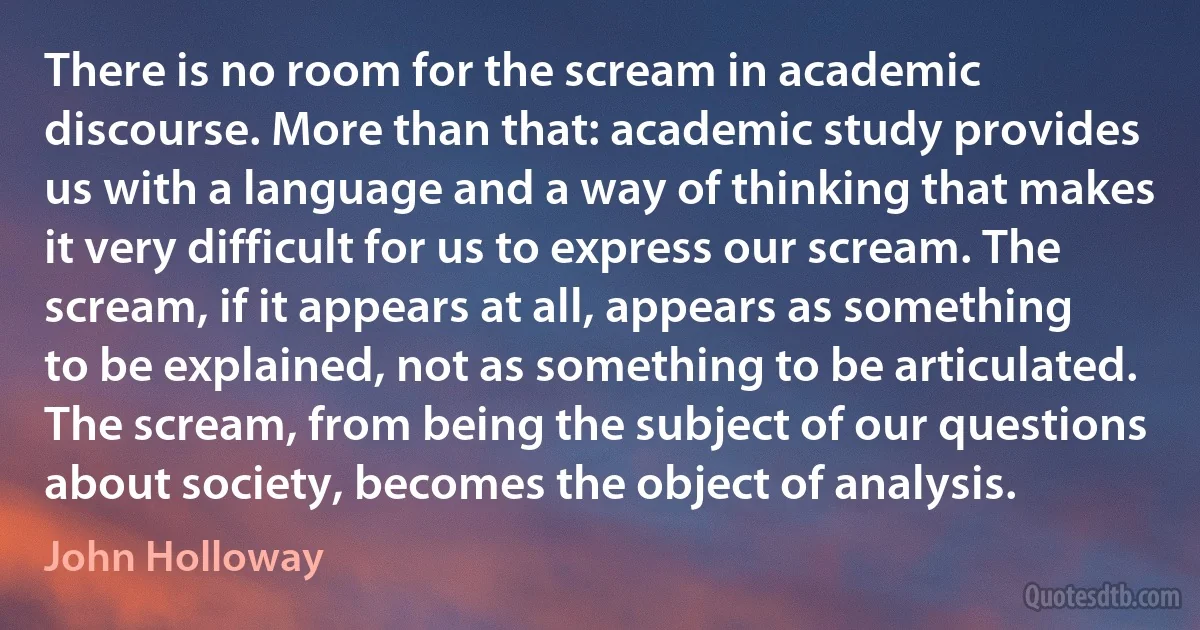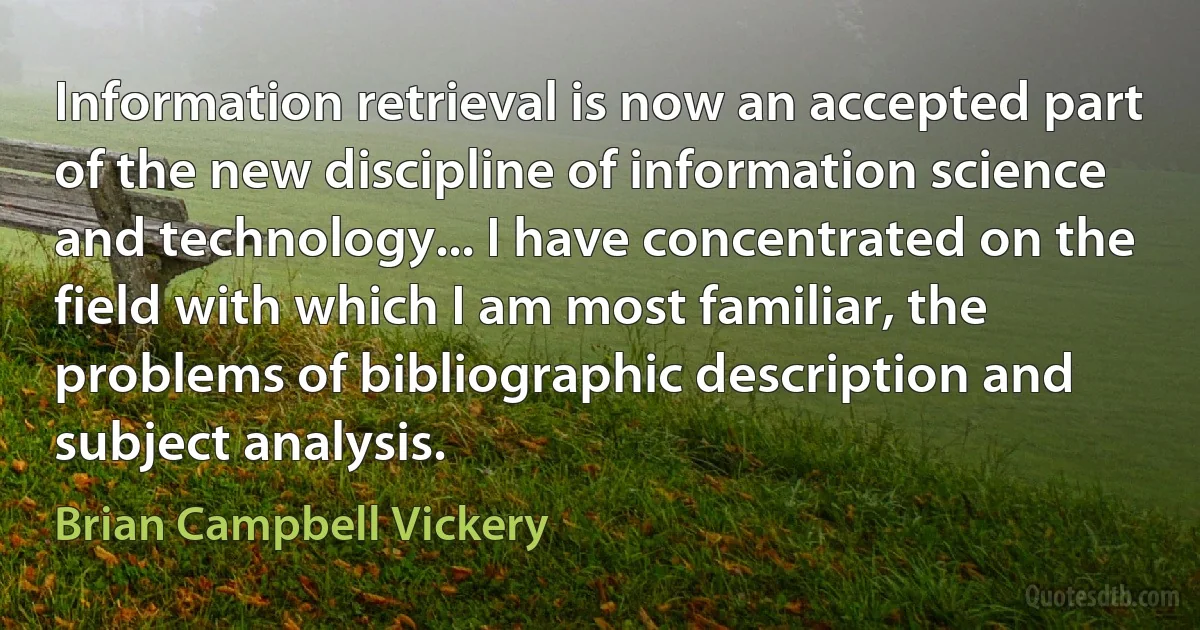Analysis Quotes - page 23
The words "routine analyses" are used to denote the analyses performed by laboratories, frequently attached to industrial plants, and distinguished by the following characteristics: (1) All the analyses or measurements of the same kind, for example, are designed to measure the sugar content in beets or to determine the coordinates of a star. (2) The analyses are carried out day after day using the same methods and the same instruments. (3) While all the analyses are of the same kind, the quantity n varies from time to time, where n represents some small number, 2, 3, 4, 5.

Jerzy Neyman
Analysis is the critical starting point of strategic thinking. Faced with problems, trends, events, or situations that appear to constitute a harmonious whole or come packaged as a whole by common sense of the day, the strategic thinker dissects them into their constituent parts. Then, having discovered the significance of these constituents, he reassembles them in a way calculated to maximize his advantage.

Kenichi Ohmae
The fact must be expressed as data, but there is a problem in that the correct data is difficult to catch. So that I always say "When you see the data, doubt it!" "When you see the measurement instrument, doubt it!... For example, if the methods such as sampling, measurement, testing and chemical analysis methods were incorrect, data... to measure true characteristics and in an unavoidable case, using statistical sensory test and express them as data.

Kaoru Ishikawa
There does seem to be among some members of our profession a rather desperate search for a "fundamental theory of information", which leads them to attempt to derive our practice from disciplines such as epistemology, or hermeneutics, or discourse analysis, or semiotics, or even "cybersemiotics". Their derivations rarely make adequate contact with the realities of information practice ... The theory of a science should spring from deep immersion in its practice.

Brian Campbell Vickery
Throughout life, all people are engaged in activities – practical or mental – trying to solve problems, activities that themselves give rise to problems. To solve these problems, people need knowledge. They can acquire this personal knowledge in two main ways. First, they can interrogate the world – natural and social – by means of closer observation, deeper analysis, controlled experiment, all forms of cognitive interaction. Second, they can enrich their personal knowledge by communicative interaction with the stock of public knowledge that mankind has built up over the millenia, thus acquiring what we may call information. The activities in which people engage also produce two other kinds of knowledge: that embodied in people (skills) and that embodied in their artefacts.

Brian Campbell Vickery
In the past, documentation has frequently been compared with librarianship, with some argument as to which comprehends the other. The field is more helpfully characterised if we take its scope to be all forms of document (i. e. any physical carrier of symbolic messages) and all aspects of their handling, from production to delivery. The document system then becomes very much wider than conventional librarianship – it includes publication and printing, distribution, some forms of telecommunication, analysis, storage, retrieval and delivery to the user.

Brian Campbell Vickery
When, one day, you have made your mark on the world, remember that, in the ultimate analysis, we are all mere temporary custodians of the wealth we generate, whether it be financial, intellectual, or emotional. The best use of all your wealth is to share it with those less fortunate.

N. R. Narayana Murthy
Science has always tried to understand nature by breaking things into their parts. Now it is overwhelmingly clear that wholes cannot he understood by analysis. This is one of those logical boomerangs, like the mathematical proof that no mathematical system can be truly coherent in itself.

Marilyn Ferguson
Consider how one silently reads the following sentence: ‘The forest ranger did not permit us to enter the reserve without a permit'. Note that on its first occurrence, the word ‘permit' was (silently) pro-nounced with the stress on the second syllable (permit), hereas on its second occurrence the stress was on the first syllable (permit)... The syntactic and semantic analysis required to determine the appropriate meaning of the word ‘permit' must have taken place prior to the allocation of the stress pattern; and this in turn, must have taken place prior to the phonemic image entering awareness.

Max Velmans
The more successfully we learn and practice the gospel of plasticity, the less suitable we become as subjects of the necessitarian styles of social and historical analysis that the great social theorists have taught us. We can, in fact, raise a storm in the world and still understand and explain ourselves. All we need is a better approach.

Roberto Mangabeira Unger
Much attention has been given in recent years to what might be called the "higher organization" of the state, both in the practical experimentation of modem nations and in the domain of theoretical analysis. In almost every country in the world there has been experimentation with and discussion of the emerging evolution of political-economic forms and forces, now everywhere challenging the peace and security of mankind technology, cartels, unions, business and agricultural associations, armies, professions, churches, schools. The problem of a socialistic or a mixed economy has led to vigorous debate not only upon economic principles but upon the whole political setting of economics.

Charles Edward Merriam
The grammar of Panini stands supreme among the grammars of the world, alike for its precision of statement, and for its thorough analysis of the roots of the language and of the formative principles of words. By employing an algebraic terminology, it attains a sharp succinctness unrivalled in brevity, but at times enigmatical. It arranges, in logical harmony, the whole phenomena which the Sanskrit language presents, and stands forth as one of the most splendid achievements of human invention and industry. So elaborate is the structure, that doubts have arisen whether its complex rules of formation and phonetic change, its polysyllabic derivatives, its ten conjugations with their multiform aorists and long array of tenses, could ever have been the spoken language of a people.

Pāṇini
The statement is so frequently made that the differential calculus deals with continuous magnitude, and yet an explanation of this continuity is nowhere given; even the most rigorous expositions of the differential calculus do not base their proofs upon continuity but, with more or less consciousness of the fact, they either appeal to geometric notions or those suggested by geometry, or depend upon theorems which are never established in a purely arithmetic manner. Among these, for example, belongs the above mentioned theorem, and a more careful investigation convinced me that this theorem, or any one equivalent to it, can be regarded in some way as a sufficient basis for infinitesimal analysis. It then only remained to discover its true origin in the elements of arithmetic and thus at the same time to secure a real definition of the essence of continuity. I succeeded Nov. 24, 1858.

Richard Dedekind


![Thus it is with all pictures, there are many layers, and with good reason an analysis nearly always deals with the last [layer]. The last layer in a superficial sense. But how then can one talk of what one cannot see, the overpainted or wiped-off layers, how to go about for example, photographs that are like slates with layers which no longer exist. The answer is that they exists nevertheless, taken up into the visible layer by a rubbing-off, but the problem, on the whole, is how one deals with the visible layer. The angle-sure, viewpoint seeking and in the worse sense 'analytic' intercourse with the picture. (Per Kirkeby)](https://cdn.quotesdtb.com/img/quotes_images_webp/78/per-kirkeby-analysis-answer-953378.webp)
